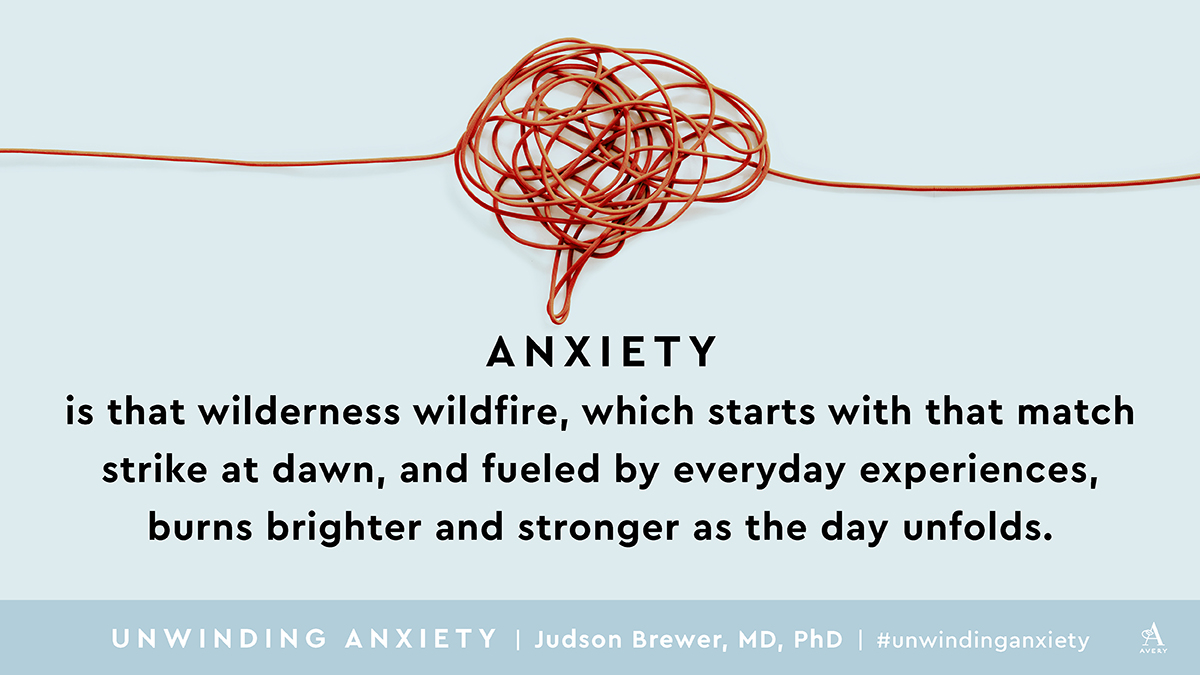A woman walks into a therapist’s office and asks him to help her overcome her fear of being buried alive in a box. After the therapist informs her that he charges $5 for the first five minutes, but nothing after that, he proceeds to ask her to state her fears and anxieties, and in a loud and stern voice, follows each of her statements with, “Just stop it!”
This is a skit from the Bob Newhart Show from the 1970s, but is telling today.
Anxiety is no stranger in modern times. Nearly 1 in 3 individuals will suffer from an anxiety disorder in their lifetime, and since the COVID-19 pandemic began, the US Census Bureau reported that adults were more than three times as likely to screen positive for anxiety disorder in 2020 compared to 2019.
On top of this, we started 2020 with a bit of water already in the boat — the idea that we need some level of anxiety as an adrenaline boost to get things done and perform well in life.
In 1908, two animal behavior researchers at Harvard observed that Japanese dancing mice performed better at a task when they received a moderate shock as a negative reinforcer rather than a mild or severe shock. In a paper published in 1955, without evidence, the German-born British psychologist Hans Eysenck suggested that this “Yerkes-Dodson Law,” little referenced up to that point, could hold true for anxiety: He speculated that a certain amount of arousal might improve a subject’s task performance. Two years later, one of Eysenck’s former graduate students eye-poppingly reported that holding a rat’s head underwater for a moderate amount of time “motivated” it to swim faster. With a wave of the hand and some conflation of the terms “motivation,” “arousal,” and “anxiety,” he took this as definitive evidence of the benefits of a sweet spot of baseline anxiety – some, but not too much.
In fact, a review of the psychological literature pertaining to stress and work performance finds far more evidence of a negative linear relationship – any level of stress inhibits performance. However, the Yerkes-Dodson “Law” implanted itself in the public consciousness and convinced legions of everyday strivers that feeling stressed or anxious is just a normal part of successful people’s to-do lists.
But if stress and anxiety become routine, they can turn into habits. That’s right – just as we might call smoking or binge eating bad habits, stress and anxiety can become their own self-reinforcing behaviors. As Pennsylvania State University researcher Thomas Borkovec discovered, anxiety has the same critical components of other habits – a trigger, a behavior, and a reward – all driven by its bedfellow, worry.
Around 2016, when my lab was studying how best to help people quit unhealthy habits, someone testing one of the programs I had developed mentioned that her big trigger for eating was anxiety. She asked if I could develop a program for anxiety, which also forced me to come to terms with my roughly 1 in 5 hit rate with anxiety treatment in my outpatient clinic. So I looked into it. Discovering Borkovec’s work for myself, I had a lightbulb moment: my lab’s work targeting habit loops for smoking had yielded five times the quit rates of gold standard treatment, and a University of California, San Francisco study of our app-based treatment for overeating already underway would go on to show a 40% reduction in craving-related eating; maybe we could apply these methods to anxiety.
We developed an app-based treatment that targeted anxiety habit loops; my lab started testing it. In a study of anxious physicians, we found that they showed a 57% drop in anxiety after three months of using the program. People with Generalized Anxiety Disorder (GAD) showed a drop of 67% in anxiety after two months of training [this paper is under review]. And with these data in hand, we could calculate the number needed to treat: 1.6. Fewer than two people needed to use the treatment to see a significant reduction in anxiety.
These results made sense – by targeting and even tapping into the much older (and stronger) brain systems of habit formation, one can learn to work with anxiety and worry, without falling back to outdated notions of control.
For many of my patients, and even myself, the recognition that anxiety can be its own toxic comfort has been a lightbulb moment. It can be unsettling to examine our thoughts and our behaviors closely. We accept anxiety and worry because we think of them as unfortunate but necessary companions on the road to success, but they can easily become roadblocks in themselves. By focusing our awareness on the habit loop driving anxiety, we don’t eliminate uncertainty from our lives, but we take control of whether we allow worry to breed anxiety.
That’s where relief comes. Once we realize that, we can shake off the “just stop it” mentality.


